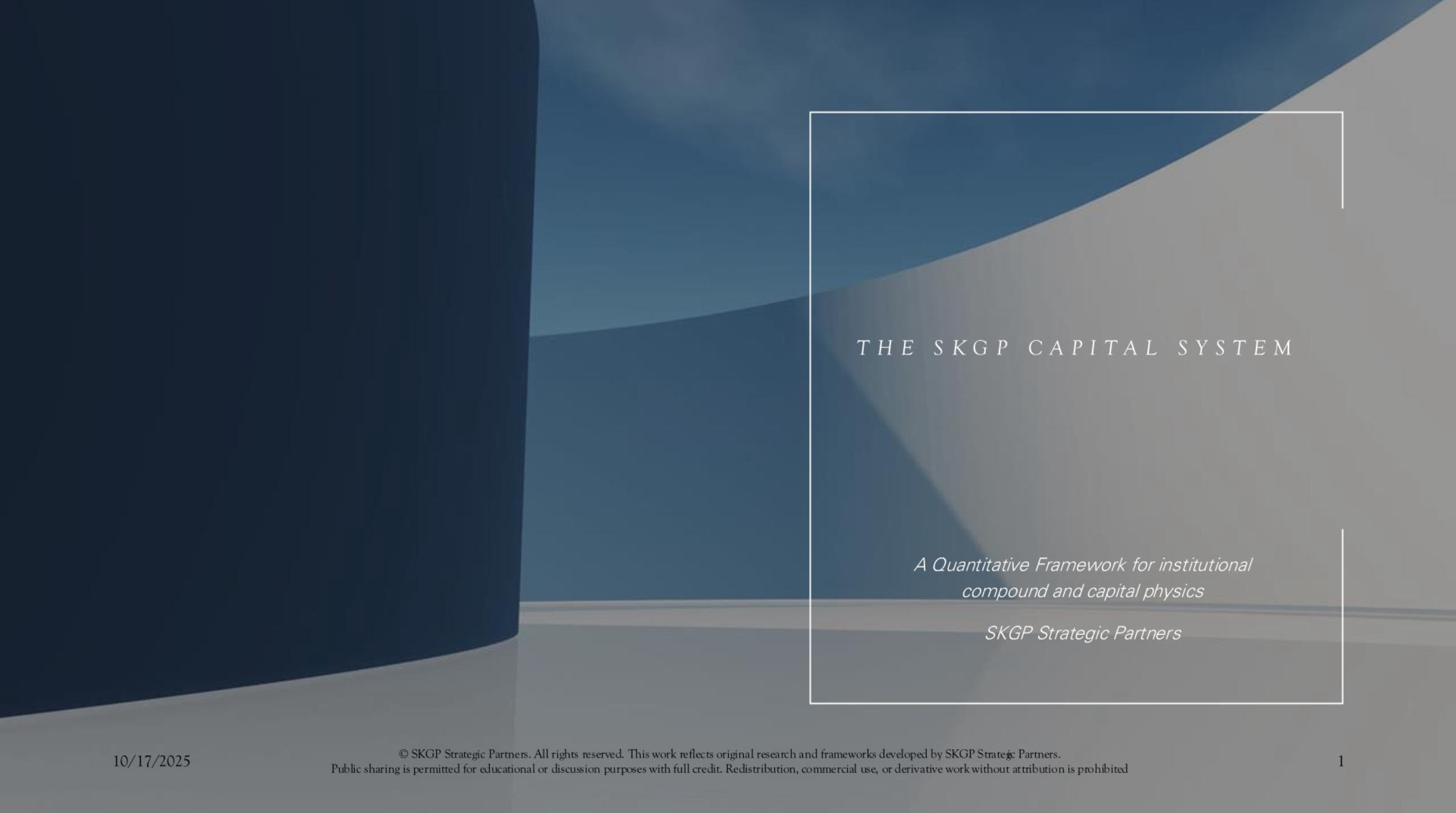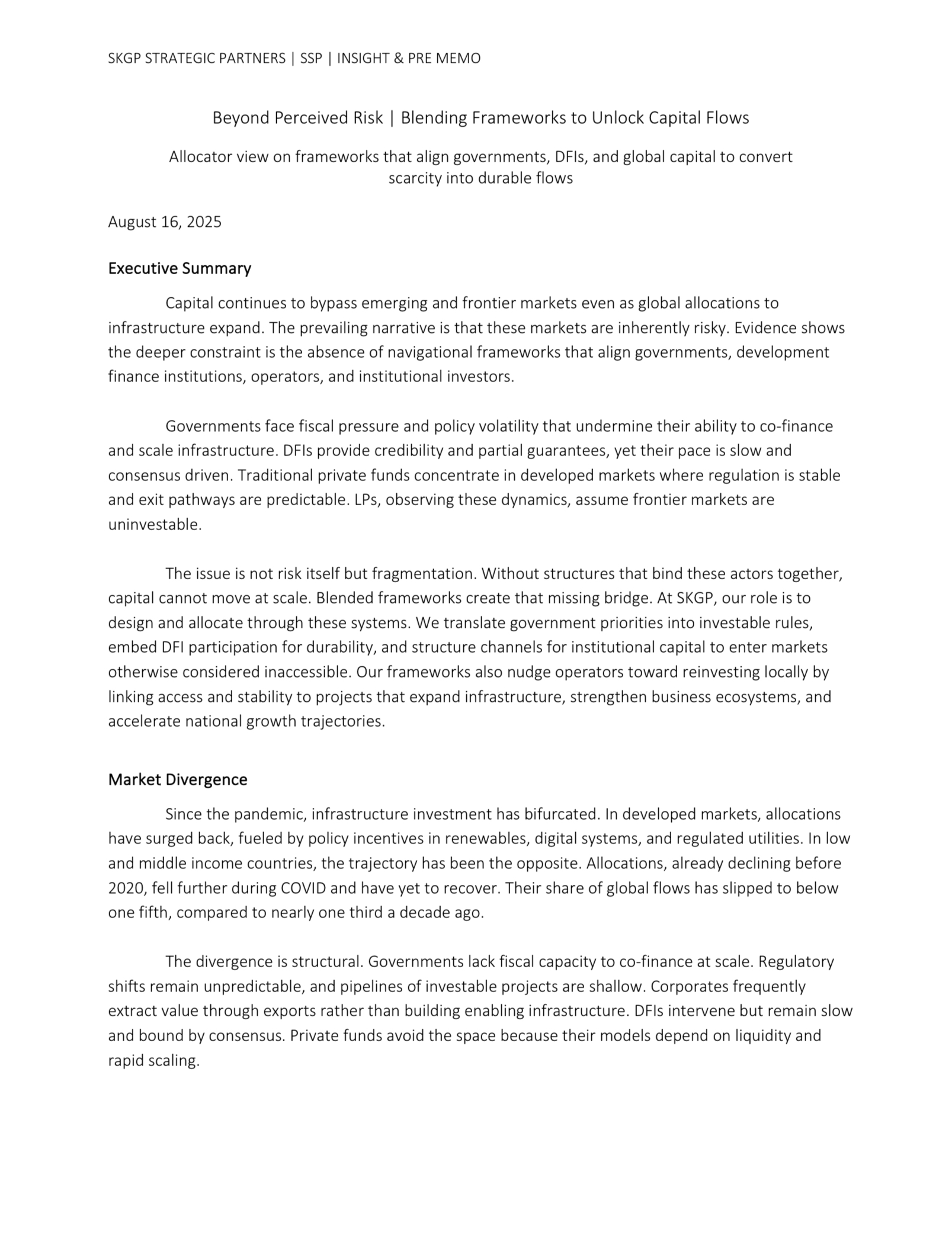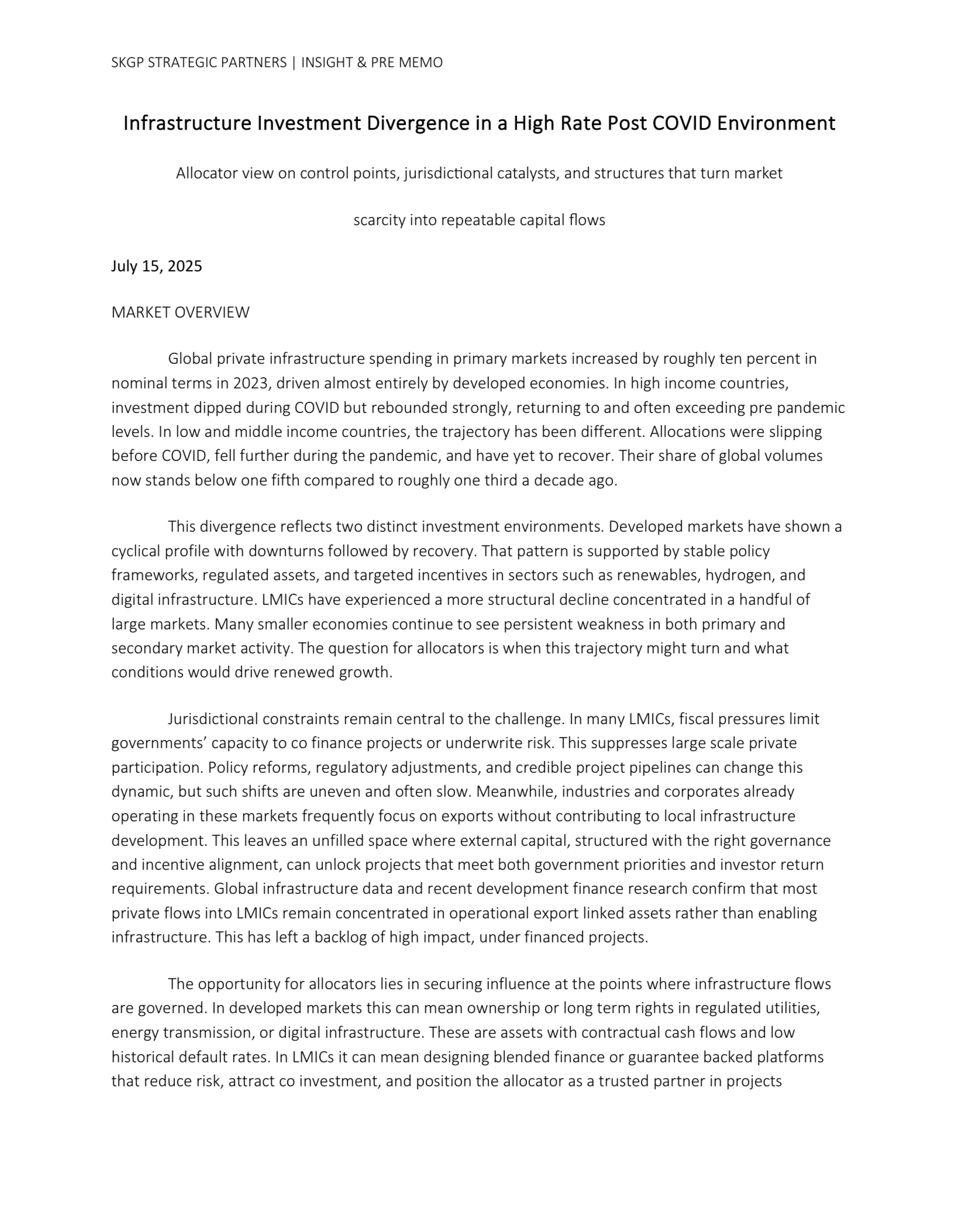Pre-Yield Assets (PYA)
Core Topics
What is a Pre-Yield Asset?(PDF)2025 Video
Why early stage assets form value before cashflow(PDF)2025Video
Why pre-yield equals infrastructure, not speculation(PDF)2025 Video
How PYA reclassifies exploration, agri, energy, etc(PDF)2025 Video
PYA vs private equity(PDF)2025 Video
PYA vs venture(PDF)2025 Video
PYA vs credit(PDF)2025 Video
PYA as a structured exposure category
Video
Technical Subtopics
NAV uplift as yield
Probability weighted gate progression
Early stage asset mispricing
Institutional allocability
PYA as sovereign aligned development
Structured Exploration
Core Topics
Structured vs unstructured exploration
Why exploration breaks institutional models
The architectural classification error
How to convert exploration into an asset class
Exploration as a governance and sequencing problem
Technical Subtopics
Gate architecture
Information quality uplift
Technical derisking curves
Classification vs speculation
Exploration to structured asset formation
The Capital Physics System Three
Technical Subtopics
Liquidity Engineering
Offtake structuring
Joint venture transition points
Data sales
Corridor packaging
Royalty and hybrid instruments
Institutional Readiness Scoring
What institutional readiness means
How governance, jurisdiction, records, and gates create readiness
Why PYA can meet pension and sovereign requirements
System Covariance Surfaces
Multi asset covariance behavior
How systems derisk together
Why Pre Yield covariance is structural, not market linked
Gate Compression Dynamics
How gate spacing behaves
Why compression accelerates NAV uplift
How capital velocity increases as gates compress
The Capital Physics System Four
Technical Subtopics
Derisking Pathways
How pathways represent structural options
How each pathway produces its own probability curve
How institutional investors choose pathways
Platform Wide Expected MOIC Model
How MOIC applies before yield
Why uplift events determine MOIC
How system wide MOIC differs from asset level MOIC
Corridor Activation Logic
How corridor formation changes asset physics
How corridor activation transforms uplift curves
Why institutional readiness increases with corridor integration
The Capital Physics System One
Core Topics
How capital moves through systems
The physics of capital velocity
Why capital behaves like energy
System Level capital compounding
Technical Subtopics
Node architecture
Probability weighted valuation
Risk decay
Jurisdiction exposure score
Cross node covariance
NAV surfaces
Recycling and velocity equations
Multi layer exposure design
Expected Shortfall Architecture
How ES maps to early stage assets
Why expected shortfall matters more than volatility
How ES becomes a constraint for allocators
How PYA replaces price based volatility with structure based risk
The Capital Physics System two
Technical Subtopics
Risk Capital Allocation (RCi)
How risk capital assigns weight to node progression
How RCi integrates jurisdiction, gates, and uplift
Why RCi is the correct risk unit for PYA rather than VAR or beta
Supply Demand Timing Variables (φi and CVXi)
How convexity creates timing windows in real assets
Why commodity systems must be timed structurally
How PYA captures convexity without speculating on spot markets
AUM Compounding Model
How platform level compounding works
Why uplift reinvests into next cycles
How recycling affects long horizon AUM expansion
Recycle Ratio (Rcyc) Framework
How Rcyc determines system momentum
How high recycling ratios amplify compounding
Why Rcyc is the backbone of PYA capital physics




